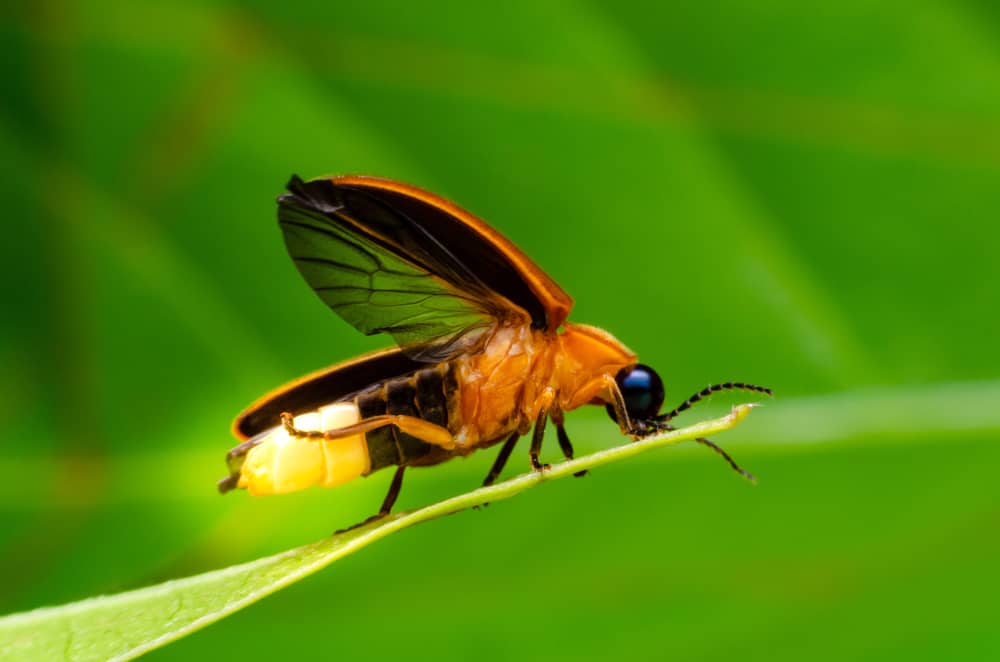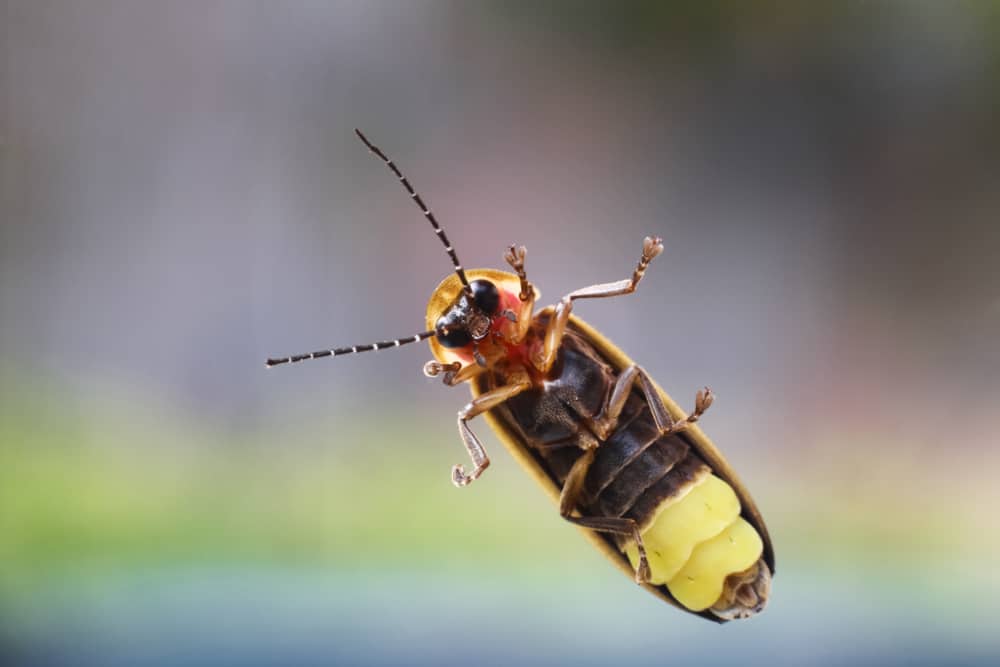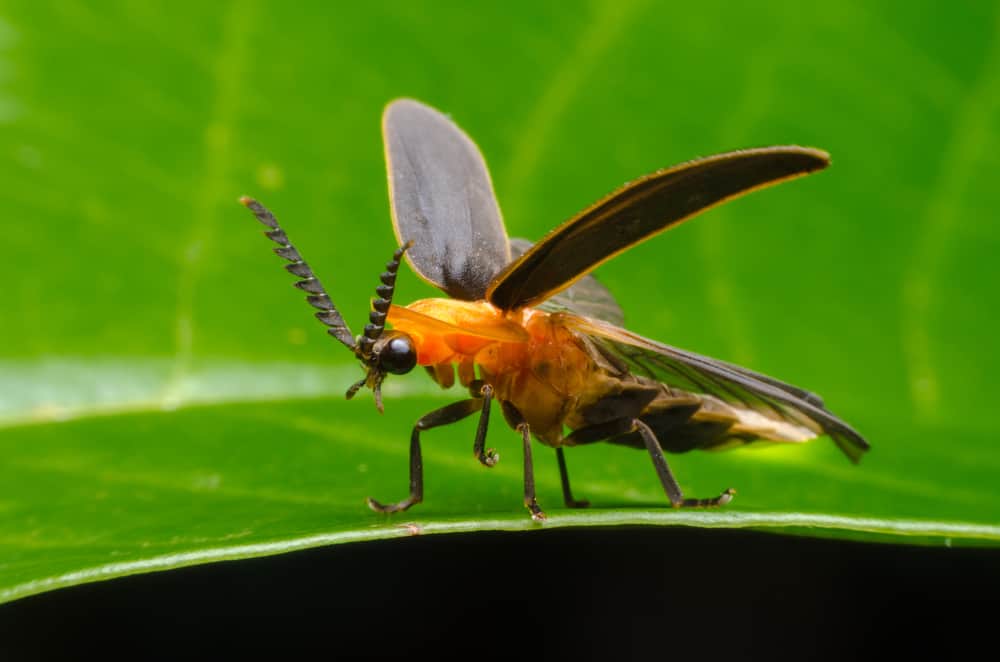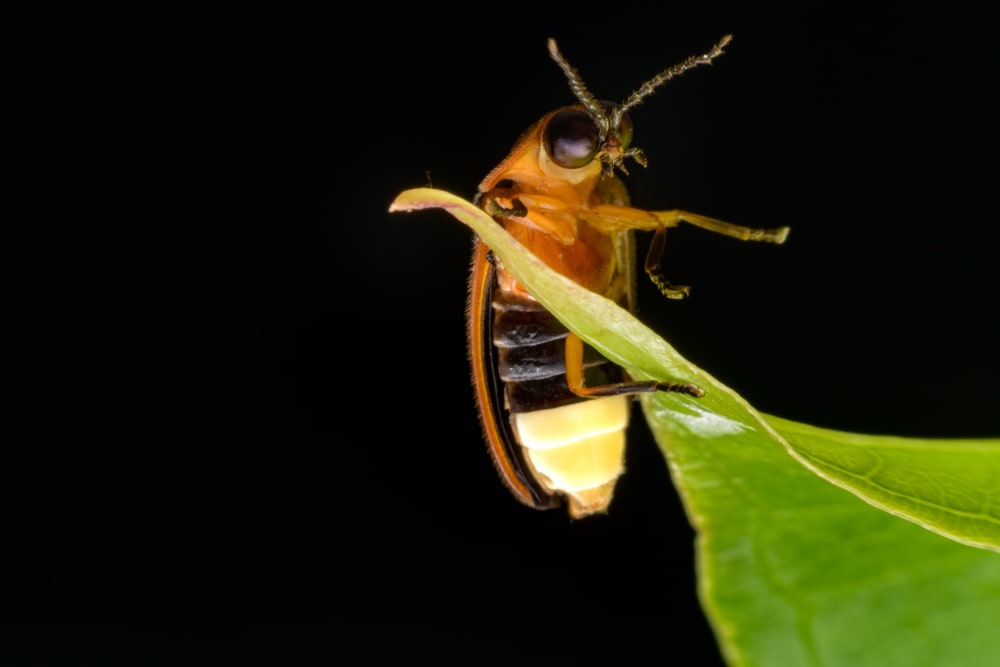The way they light up the night is miraculous, almost as if Christmas came early. Lightning bugs, otherwise known as fireflies, bring back pleasant memories.
As a child, you probably had a jar in hand chasing them around your garden. Some adults still find them fascinating. That said, what do lightning bugs eat?
Let’s find out.
fireflies Habits and biology
Lightning bugs or fireflies are actually beetles. Yes. They are soft-bodied beetles that glow in the dark from their low abdomen (belly).
Did you know there are over 2,000 different species of lightning bugs? Surprisingly, not all of them glow in their adult stage.
The color of their glow varies from species to species. Most either produce a green, yellow or pale red color.
Some species found in the eastern parts of the United States appear to produce a blue-ish color from afar. But when observed from a close distance, it actually glows green. Hence its name, the blue ghost.
They use their unique ‘super power’ of glow to find mates, lure prey, or warn predators of their bad taste or toxicity.
Most lightning bugs are distasteful to predators. They excrete toxins similar to those found in poisonous toads, and therefore predators tend to avoid eating them.
Lightning bugs inhabit wetland areas or marshes where their offspring (larvae) will have plenty of food sources. The offspring of lightning bugs are known as glow worms.
All species of lightning bugs glow in their larvae stage, whereas on reaching maturity, not all possess the power to light.
Fireflies are primarily nocturnal and are therefore active at night. Few are active both at night and daytime.
During winter, glowworms hibernate. Some by burrowing themselves underground, and others prefer to find a cozy place under tree barks.
Glowworms are carnivorous and prey on snails, slugs, and other larvae. Their adult counterparts’ diets vary as, like bees, they have a sweet tooth –they feed on nectar.
In some species of lightning bugs, females sneak onto spider webs to steal prey. The female fireflies exhibit a behavior known as kleptoparasitism.
Kleptoparasitism is where an animal acquires resources from another animal, normally food, through theft.
Do you know that there are giant lightning bugs? Yes. Females of the species Lamprigera can grow close to the size of your palm. Lightning bugs possess the ability to glow.
Lightning bugs have a short lifespan. A large portion of their lives is spent as larvae. As adults, they live for several weeks.
What Do fireflies Like To Eat Most?
The diets of adult lightning bugs and those of their young differ. As larvae, they are carnivorous and prey on other animals and insects. Adults eat little, and sometimes they don’t eat at all.
In their larvae stage, lightning bugs feed on:
- Snails –are found in the natural habitats of lightning bugs and act as a staple diet.
- Slugs –just like snails are part of the lightning bugs staple diet.
- Earthworms
- Dead animals.
- Organic material.
- Other larvae –lightning bugs are also known to prey on each other in adult and larva stages.
Lightning bugs spend most of their lives as larvae, and this is when most feeding occurs. Adults only live for a few weeks, and their main goal is to mate.
For this reason, most lightning bugs either feed very little or nothing at all. On that account, things adult lightning bugs like to eat most is as follows:
- Nectar –lightning bugs visit all plants to feed on nectar. They prefer the sweeter and more floral species that have a lot of pollen.
- Pollen –fireflies gain the energy required to carry out their daily activities.
- Dew droplets.
- Other insects –several firefly species that prey on other insects don’t chew or swallow their victims. Instead, they inject them with a unique poison that liquefies the victim.
They then proceed to suck the insides of their prey directly to speed up the digestion process.
Female lightning bug adults of the species Photuris feed on male lightning bugs, earning them the tag ‘femme fatales.‘
The Photuris imitate the flash patterns of other lightning bug species to lure unsuspecting males to their doom.
They eat the male lightning bugs to acquire toxins that they deposit into their eggs to act as a chemical defense for their young ones.
Foods To Avoid Feed fireflies
Lightning bug populations are dwindling all over the globe due to several factors, primarily human interference. Some of the reasons leading to their decline are:
- Pesticides –when lightning bugs consume plants exposed to pesticides, they die. Although the intent of using pesticides is to rid vegetation of pests, lightning bugs pose no threat.
In fact, they are beneficial as they play a crucial role as pollinators. Scientists have also found that lightning bugs play a vital role in the field of medicine.
- Light pollution –interferes with the natural habitat of lightning bugs. Lightning bugs use their glow patterns to locate males. When they are incapable of doing so due to too much light, they die.
Using chemicals to rid the land of snails or slugs also contributes to the decline of lightning bugs. The absence of snails and slugs leaves these bugs foodless, and they succumb to hunger.
Tips To Feeding fireflies
Lightning bugs are incredible creatures you would enjoy having around your home. If you want to feed them, you’ll first have to catch them.
Here are some helpful pointers:
- First, you’ll have to make use of attractive plant material. Allow your bushes and grass to grow. Lightning bugs are attracted to grass as they like to rest on the edges during the day, especially females.
- If able to, plant pine trees. They provide ample shading that is ideal for mating without the inference of sunlight. Furthermore, the leaves that fall offer a suitable place for lightning bug babies to grow.
- Grow flowers around your home. Flowers will motivate them to hang around your garden as they love pollen and nectar.
- Keep wood and allow it to rot. Some species of lightning bugs lay their eggs on rotten logs. Their young ones will then dine on the earthworms, snails, and slugs found in the environment.
- It would be best if you stored the logs loosely to allow the free flow of air. Try not to interfere with the environment once the lightning bugs move in.
- The next step is to make the environment inviting. You can achieve this by building a small pond. Lightning bugs love water and marshy (waterlogged) land.
- Avoid keeping your lights on at night. Lightning bugs mainly glow to keep off predators and to find mates. So, the darker the environment, the better for them.
- It would be best if you avoid using chemicals such as pesticides and herbicides in your yard. The use of these chemicals is the prime cause of the decline of lightning bugs.
- Allow earthworms, grub, snails, and slugs to stick around in your yard. These creatures will provide a meal for your lightning bugs.
- Catching lightning bugs in a jar isn’t of much help when it comes to feeding as they tend to eat very little or nothing at all.
- If you prefer catching them in a jar, ensure to release them back into the wild after a day or two, allowing them to mate and die.
If you have the space and time to carry out the abovementioned instructions, believe me, it’ll be worth it. Your nights will always be magical.
Frequently Asked Questions
How do lightning bugs light up?
A chemical reaction takes place in the bodies of lightning bugs that enables them to glow. The type of light they produce is called bioluminescence.
The chemical reaction in the lightning bugs doesn’t produce heat and hence is known as ‘cold light.’
Do lightning bugs bite?
No. lightning bugs don’t bite, sting, attack, carry disease, and are not poisonous to human beings. Lightning bugs are most beneficial as pollinators and in the field of medicine.
How can lightning bugs save lives?
The chemicals that fireflies produce in their bodies are essential in biomedical research. The substances are helpful in the study of diabetes, cancer, gastric inflammation, allergy response, and the effect of a variety of pollutants in the human body.
The chemicals are also helpful in food safety testing.
What do lightning bugs do during the day?
Lightning bugs are nocturnal. They spend most of their day surrounded by tall grasses. The long grasses shield them from predators; hence you are unlikely to spot them.
Other fireflies are active both at daytime and night, but most of these species don’t glow, making them hard to spot.
Summary
Watching lightning bugs float around as they shine their light is magical. They pose no threats to vegetation or human beings, unlike other bugs. Their only job is to rise and shine.
Catching lightning bugs and feeding them is easy, but remember to set them free soon after. This way, their light will shine on through their offspring.



